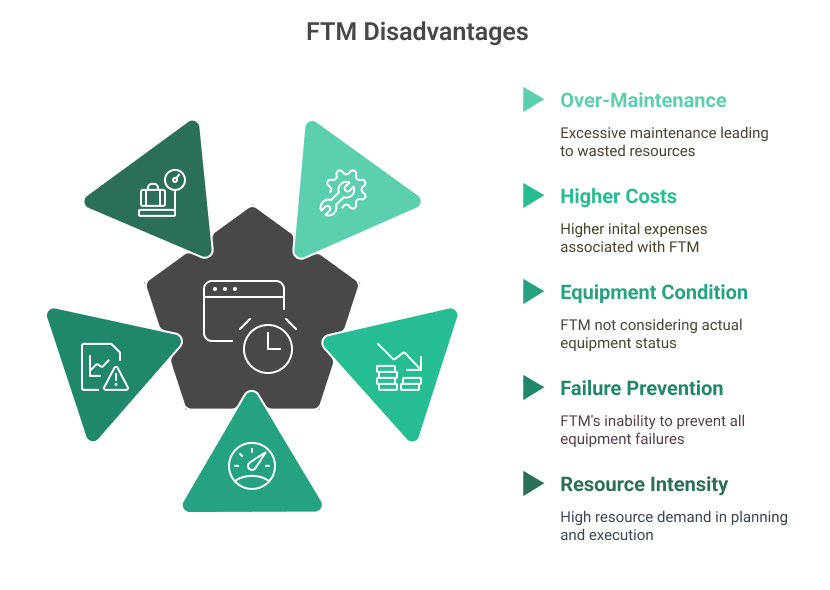What is Fixed-Time Maintenance (FTM)
Fixed-time maintenance (FTM) is a foundational preventive maintenance strategy in which organizations perform maintenance activities at predetermined, regular intervals, regardless of the asset’s current condition. These intervals are typically determined by calendar time, operating hours, cycles, or production output.
Organizations implement FTM by establishing maintenance schedules based on manufacturer recommendations, creating standardized procedures, and developing comprehensive resource allocation plans.
This systematic approach requires careful labor and material planning, supported by automated scheduling systems and meticulous documentation of all activities.
The strategy is widely used across various maintenance scenarios, from critical safety equipment inspections to routine tasks like lubricating rotating machinery, filter replacements, and calibrating measuring instruments. It proves particularly valuable for ensuring compliance with statutory inspection requirements.
Advantages of FTM
FTM offers several compelling advantages. It enables predictable maintenance costs and resource planning, simplifies budgeting and inventory management, and ensures regulatory compliance. Organizations benefit from reduced risk of unexpected failures and straightforward scheduling. The clear documentation trail also supports effective auditing processes.
Advantages of FTM:

- Predictable maintenance costs and resource planning
- Easier budgeting and inventory management
- Compliance with regulatory requirements
- Reduced risk of unexpected failures
- Simplified scheduling and workforce planning
- Clear documentation trail for auditing

Drawbacks of FTM
However, the approach isn’t without its drawbacks. Organizations may face challenges with over-maintenance and unnecessary parts replacement, leading to higher short-term costs than reactive maintenance. Since FTM doesn’t account for actual equipment conditions, it may not prevent all failures and can be resource-intensive in planning and execution.
Disadvantages:
- Potential for over-maintenance and unnecessary parts replacement
- Higher short-term costs compared to reactive maintenance
- It doesn’t account for actual equipment condition
- It may not prevent all failures
- Resource intensive in terms of planning and execution

How to Manage FTM
Organizations typically rely on sophisticated tools to manage FTM effectively. Computerized Maintenance Management Systems (CMMS) WorkTrek handles scheduling and work order management. Enterprise Asset Management software, such as SAP PM, supports comprehensive asset lifecycle management.
Many organizations also utilize mobile maintenance apps for real-time reporting and digital checklists.

Best Practice for Managing FTM
Success in FTM implementation relies on following established best practices: regularly reviewing and optimizing maintenance intervals, integrating condition monitoring where feasible, ensuring continuous staff training, and maintaining clear documentation.
Organizations should also track key performance metrics such as schedule compliance rates and maintenance costs per asset.
Most effectively, FTM works as part of an integrated maintenance strategy, complementing other approaches like condition-based maintenance for critical equipment and predictive maintenance for high-value assets. This balanced approach allows organizations to optimize their maintenance operations while ensuring equipment reliability and safety.
Get a Free WorkTrek Demo
Let's show you how WorkTrek can help you optimize your maintenance operation.
Try for free



